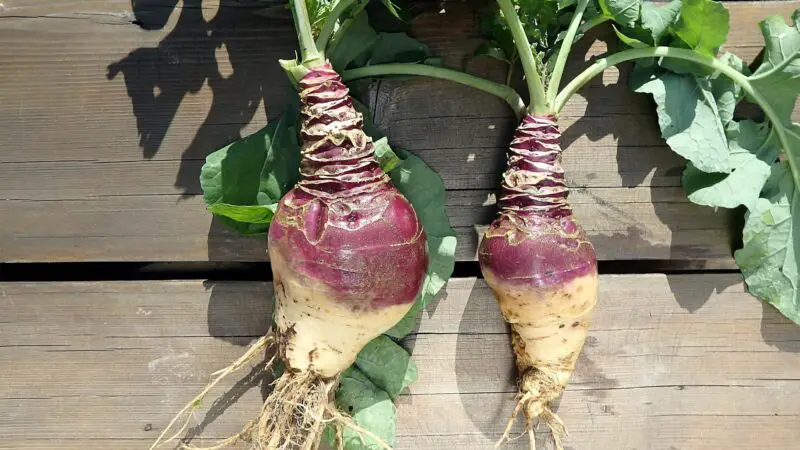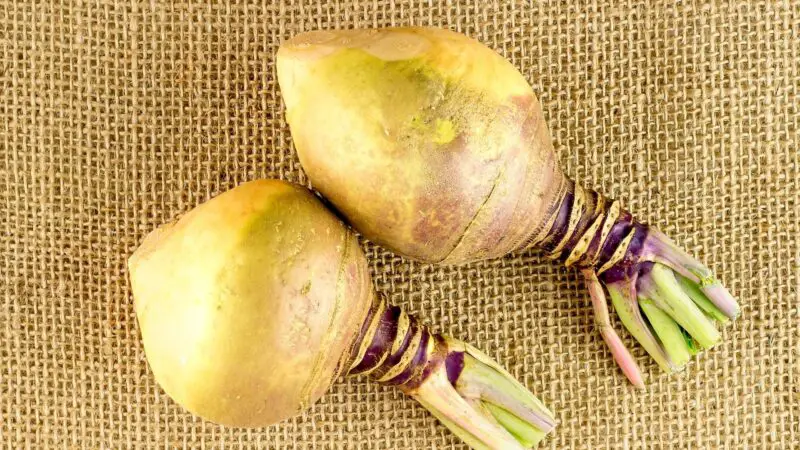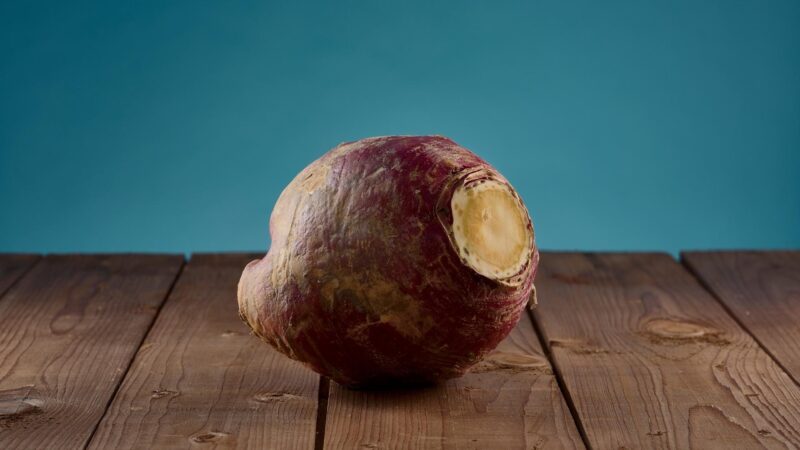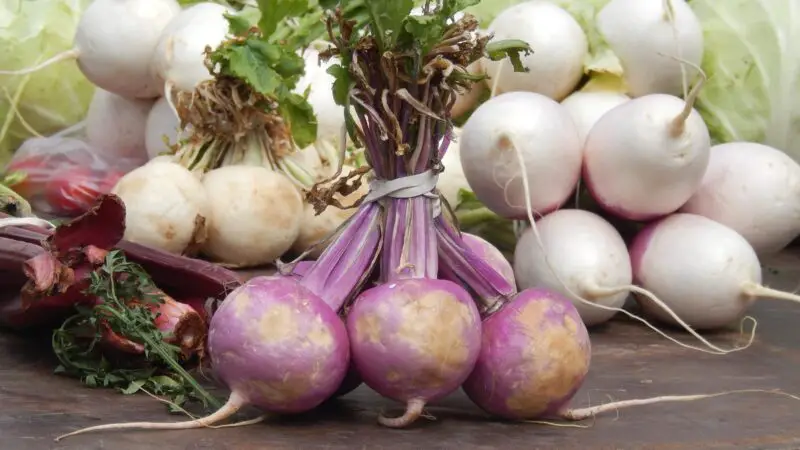Swede is also known as rutabaga. This root vegetable is a hybrid (cross) of turnips and cabbage. We use swede in a variety of dishes, and the leaves are occasionally eaten in salads. For guinea pigs, they love the taste of swede.
Guinea pigs can eat swede and they really love the taste of this veggie. Swede must be fed in moderation because it contains calcium, oxalic acids, and sugar, all of which are harmful to them.
However, this vegetable also contains vitamins and minerals that guinea pig needs. Thus, I only fed them in moderation, maybe twice a week at most.
Table of Content
Is Swede Good for Guinea Pigs? | Health Benefits

Vitamin C in swede will keep your guinea pig safe from the fatal disease called scurvy. Guinea pigs are prone to this disease when they lack vitamin C from foods or supplements. This disease manifests itself with loss of appetite, rough coat, diarrhea, bleedings, discharges, and weight loss.
Manganese acts as an antioxidant. Also, the iron, zinc, selenium, and copper found in swede boost the immunity in guinea pigs.
Nutrition Facts of Swede

For the serving, 3 oz of swede, raw, these are the nutrition facts:
- Low in calories – 36 calories. Swede isn’t too caloric, which is good for maintaining a healthy weight in guinea pigs.
- Proteins and carbs – 8.1 g of carbs and 1.2 g of proteins.
- Fiber – 2.5 g. A good amount of fiber in this vegetable. The fibers contribute to healthier digestion and regular bowel emptying.
- Sugar – 5.6 g. This amount is too high for the guinea pigs because they can’t digest sugars well.
- Fat – 0.2g. Rutabaga is low in fat and this is another proof that your guinea pig will keep a healthy weight, and also a healthy cardiovascular system.
- Vitamin C – 42%. There is a lot of vitamin C in this veggie, not the optimal amount, but still very good. Our guinea pigs need this to survive and to be healthy because they cannot make this vitamin on their own
- Thiamin – 6%. The other name of this nutrient is B1. B1 boosts the health of muscles, brain, nerves, intestines, stomach, and heart. Also, it makes a better flow of electrolytes to the nerves and muscles.
- Vitamin B6 – 5%. This vitamin reduces stress, helps with better sleep, and boosts the production of serotonin (hormone for happiness).
- Calcium – 47 mg. This mineral forms strong bone tissues, but in excess, it is unhealthy for the guinea pigs. Swede has a lot of calcium, so feed this in moderation as we mentioned.
- Iron – 3%. Iron is one of the most vital minerals. Its role is to remove fatigue, give energy and boost the immunity to fight off anemia.
- Magnesium – 6%. Magnesium prevents diabetes and heart problems. It helps to make the bones stronger too.
- Potassium – 10%. This nutrient lowers the high blood pressure, keeps the density of the bone tissues, lowers the risks of getting a stroke, and protects against loss of muscle mass.
- Manganese – 9%. This antioxidant is one of the strongest. It reduces the risk of almost all diseases, lessens inflammations, and regulates blood sugar.
Can Swede Be Bad for Guinea Pigs? | Possible Risks

- Kidney problems and gasses – Swede, in excess, can cause serious health problems for the guinea pig. There is more risk of kidney stone formation due to oxalic acid. Oxalic acid binds together with calcium in foods, and this increases health risks.
- Urinary problems – Swede has calcium. Calcium, in excess, increases the risk of kidney and bladder stones, painful urinating, infections, and even bloody urine. The worst-case scenario is renal failure when the kidneys stop working.
- Bad digestion – The sugar in this veggie can affect the gut health of cavies. Since sugar isn’t well digested by the guinea pigs, it can cause painful digestion, gasses and flatulence, or loose stool and cramps.
Quick Facts About Swede

- Worldwide this veggie is called ‘swede,’ but in North America, it is called ‘rutabaga.’
- The origins are still not certain, but it is believed it was first cultivated in Russia and Scandinavia.
- Rutabaga was widely introduced in the Americas and England in the 19th century.
- The leaves of this veggie are used the same way as we use spinach, and the root is cooked similarly to potatoes.
- Another name for this veggie is ‘Swedish turnip’ and the word ‘rutabaga’ comes from the Swedish ‘rotabagge,’ meaning ‘baggy root’ or ‘thick root.’
- The most popular varieties of swede are American purple top, Laurentian, heirloom, and gourmet.
- We can consume the swede raw as well, but it must always be washed and peeled well.
We have also made a full list of foods that guinea pigs can and can’t eat (150+ Types of Foods). Be sure to also check our recommended products page for everything you will ever need to assure a happy life for your guinea pigs. Hope this information was helpful and you have found the answer you were looking for.
List of Sources
Nutrient Requirements of Laboratory Animals: Fourth Revised Edition
The Effects of Diet on Anatomy, Physiology and Health in the Guinea Pig
